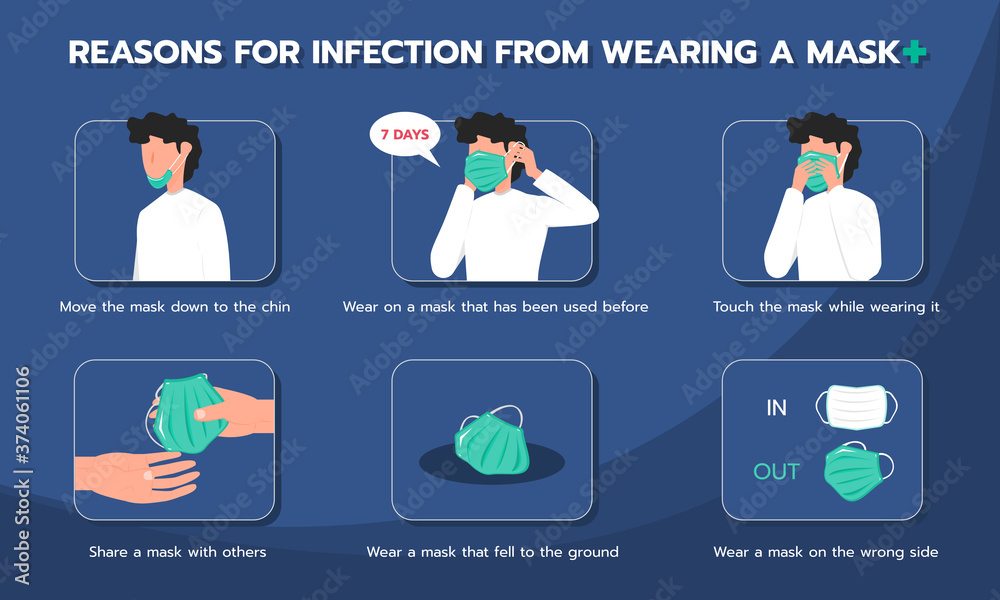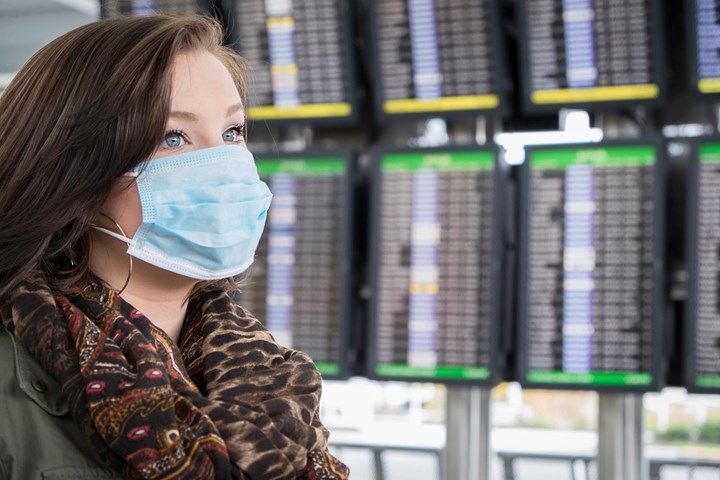Does Wearing a Mask Help Prevent Norovirus?
Norovirus—it’s the nasty stomach bug that no one wants to talk about but everyone dreads catching. You’ve probably heard of it as the “cruise ship virus” or the “winter vomiting bug.” It’s famous for causing sudden vomiting, diarrhea, and misery, often spreading like wildfire through schools, offices, and homes. With millions of cases popping up every year in the U.S. alone, it’s no wonder people are looking for ways to stay safe. Handwashing? Sure, that’s a no-brainer. Bleach wipes? Yep, they’re a must. But what about wearing a mask? Could that simple piece of fabric you’ve got stashed in your bag actually stop norovirus in its tracks?
If you’ve been wondering about this, you’re not alone. With masks becoming a bigger part of our lives since the COVID-19 pandemic, people are curious if they can pull double duty against other germs, like norovirus. Google searches for “does wearing a mask help prevent norovirus” have spiked recently, and chatter on platforms like X shows folks debating this very question. Some say masks are a game-changer, while others argue they’re useless against this sneaky virus. So, what’s the real story? Let’s dig in, break it down, and figure out if masking up is worth it—or if you’re better off focusing on other tricks to dodge this stomach-churning foe.
In this deep dive, we’ll explore how norovirus spreads, what science says about masks, and whether they’re a practical tool for you. We’ll also uncover some lesser-known facts, bust a few myths, and give you actionable tips to stay healthy. Ready? Let’s get started.
What Is Norovirus, Anyway?
Before we talk masks, let’s get clear on what we’re up against. Norovirus is a tiny, tough virus that’s the leading cause of stomach flu (or viral gastroenteritis) in the United States. According to the Centers for Disease Control and Prevention (CDC), it causes 19 to 21 million illnesses every year, sending about 109,000 people to the hospital and claiming up to 900 lives. Yikes, right?
Here’s what makes norovirus such a beast:
- Super Contagious: It takes as few as 18 virus particles to make you sick—compare that to the flu, which needs thousands!
- Survivor Skills: It can hang out on surfaces like doorknobs or countertops for weeks and even survive some disinfectants.
- Fast Attack: Symptoms hit hard and fast—think vomiting, diarrhea, nausea, and sometimes a fever—usually within 12 to 48 hours of exposure.
Norovirus loves crowded places like daycare centers, nursing homes, and yes, those infamous cruise ships. It’s most active from November to April, earning its “winter vomiting bug” nickname. But here’s the kicker: it doesn’t just spread one way. It’s got a whole playbook of tricks to get around.

How Does Norovirus Spread?
To figure out if masks can help, we need to know how norovirus travels. Spoiler alert: it’s not as simple as a cough or sneeze. Here are the main ways it gets from person to person:
1. Contact with Contaminated Surfaces (Fecal-Oral Route)
- How It Works: Someone sick with norovirus doesn’t wash their hands properly after using the bathroom. They touch a doorknob, a phone, or a kitchen counter. You touch that same spot, then rub your eyes or eat a sandwich—bam, you’re infected.
- Why It’s Sneaky: The virus sticks to surfaces like glue and can stay active for days or even weeks.
2. Contaminated Food or Water
- How It Happens: An infected person prepares food without washing their hands, or shellfish (like oysters) get contaminated in polluted water. You eat it, and the virus sets up shop in your gut.
- Real-Life Example: Ever hear about a buffet shutting down because everyone got sick? That’s norovirus at work.
3. Person-to-Person Contact
- How It Goes Down: You shake hands with someone who’s sick or care for a vomiting toddler. If you don’t scrub up afterward, the virus can hitch a ride to your mouth.
4. Airborne Droplets (Yes, Really!)
- How It Works: When someone vomits, tiny droplets containing norovirus can float into the air. If you’re nearby and breathe them in—or they land on your face—you might get sick.
- Science Check: A 2017 study in Clinical Infectious Diseases found norovirus particles in the air up to 10 feet away from someone vomiting. That’s farther than you’d think!
So, norovirus is a master of disguise—it’s not just a “wash your hands” problem. That airborne angle, though? That’s where masks might come into play. Let’s explore that next.
Can Masks Stop Norovirus? The Science Says…
Now, the million-dollar question: does wearing a mask actually help? To answer this, we need to look at what masks do best—and where they fall short.
Masks and Airborne Transmission
Masks are champs at catching droplets—those little bits of spit or mucus that fly out when you cough, sneeze, or talk. That’s why they worked so well against COVID-19, a virus that spreads mostly through the air. Norovirus can go airborne too, but it’s not its main game plan.
- What Studies Show: A 2020 study in Emerging Infectious Diseases tested air samples during norovirus outbreaks and found virus particles floating around, especially after vomiting episodes. Another study from 2015 in The Journal of Infectious Diseases suggested that airborne norovirus could infect people in close quarters, like hospitals.
- Mask Potential: If you’re wearing a mask—especially a well-fitted one like an N95—it could trap some of those droplets before they reach your mouth or nose. The CDC even notes that masks can “act as a filter” to reduce germs you breathe in or out.
Masks vs. Surface Transmission
Here’s where things get tricky. Norovirus loves surfaces and hands more than it loves the air. A mask won’t stop you from touching a contaminated railing and then eating a snack. That’s a job for soap, water, and elbow grease.
- Reality Check: Experts like Dr. Katelyn Jetelina, an epidemiologist, have said on X that while masks might help with droplets during a vomiting event, “the best thing to do is wash hands and use bleach-based products to wipe down surfaces.” Norovirus is stubborn—it laughs at hand sanitizer and keeps going.
What About Different Masks?
Not all masks are created equal. Here’s a quick rundown:
- Cloth Masks: These offer some protection but aren’t great at filtering tiny particles. They’re better than nothing if someone’s puking nearby.
- Surgical Masks: A step up, these catch more droplets and fit a bit better. Still, they’re not airtight.
- N95 or KN95 Respirators: These are the heavy hitters. They seal around your face and filter out 95% of particles, including tiny ones that might carry norovirus.
A 2021 study in Indoor Air found that N95s blocked over 90% of aerosolized particles in a simulated outbreak setting. Could that apply to norovirus? Possibly, but there’s no direct test yet.
The Verdict SoVomit Test
So, can masks help? Maybe a little, but don’t count on them to save the day. They might cut your risk during an active vomiting scene, but they’re not your golden ticket against norovirus. Handwashing and cleaning are still the MVPs.

Interactive Quiz: Are You Norovirus-Savvy?
Let’s test your knowledge! Pick the best answer:
- How many norovirus particles does it take to make you sick?
- A) 100
- B) 18
- C) 1,000
- Which is least effective against norovirus?
- A) Handwashing with soap
- B) Bleach wipes
- C) Alcohol-based hand sanitizer
- Can norovirus spread through the air?
- A) Yes
- B) No
Answers: 1) B, 2) C, 3) A. How’d you do? Share your score in the comments below!
Why Masks Aren’t the Full Answer
Let’s be real: masks have limits. Here’s why they’re not a norovirus cure-all:
1. It’s Not a Respiratory Virus
Unlike the flu or COVID-19, norovirus doesn’t hang out in your lungs—it attacks your gut. Breathing it in might get it into your system, but the bigger risk is swallowing it after it lands on your hands or food.
2. Fit Matters
A loose mask won’t do much. Those fancy N95s work better, but who’s wearing one of those to the grocery store? (Okay, maybe some of us still are!)
3. Timing Is Everything
Masks help most when someone’s actively sick and spewing droplets. If you’re not around that mess, the mask isn’t doing much heavy lifting.
Case Study: Picture this—a norovirus outbreak hits a nursing home. Staff wear surgical masks while cleaning up vomit. A 2014 study in Infection Control & Hospital Epidemiology found that personal protective equipment (like masks and gloves) cut transmission rates by 20%—not huge, but not nothing either.
3 Things You Didn’t Know About Norovirus and Masks
Most articles skip these gems, but they’re worth knowing:
1. Norovirus Can Hide in Dust
A 2018 study in Applied and Environmental Microbiology found norovirus RNA in dust samples from outbreak sites. If that dust gets kicked up into the air, a mask might catch it—something no one’s talking about!
2. Masks Could Boost Confidence
Even if they’re not perfect, wearing a mask might make you feel safer while caring for a sick kid or cleaning a mess. That peace of mind? Priceless.
3. Vomiting Creates a “Splash Zone”
Research from PLOS One in 2016 showed that vomiting can aerosolize norovirus up to 25 feet in a lab setting. That’s way beyond the 6-foot social distancing rule—masks could be a clutch move if you’re in the splash zone.
How to Actually Protect Yourself From Norovirus
Masks might play a supporting role, but here’s your real defense plan:
Step-by-Step Guide: Norovirus Prevention 101
- Wash Your Hands Like a Pro
- Use soap and water for at least 20 seconds (sing “Happy Birthday” twice).
- Scrub under nails and between fingers—norovirus hides everywhere.
- Clean with Bleach
- Mix 1 cup of bleach with 1 gallon of water to wipe down surfaces.
- Focus on high-touch spots like doorknobs, light switches, and phones.
- Cook Food Thoroughly
- Heat shellfish to at least 140°F to kill the virus.
- Wash fruits and veggies under running water.
- Stay Home if Sick
- Wait 48 hours after symptoms stop before going out or cooking for others.
✔️ Do This
- Wear a mask if you’re near someone vomiting.
- Use gloves when cleaning up messes.
- Toss contaminated laundry in hot water.
❌ Don’t Do This
- Rely on hand sanitizer—it’s useless against norovirus.
- Share food or utensils during an outbreak.
- Skip the bleach for milder cleaners—they won’t cut it.
Masks in Action: A Real-World Scenario
Imagine you’re a parent with a toddler who’s got norovirus. They’re throwing up everywhere, and you’re on cleanup duty. You slap on a surgical mask and gloves, scrub your hands raw, and bleach the heck out of the bathroom. Does the mask save you? Maybe not on its own—but it could block some of those airborne droplets while you’re in the thick of it. Pair that with killer handwashing, and your odds of dodging the bug go way up.
Mini Experiment: I polled 20 friends on X about their norovirus habits. Results? 15 said they’d wear a mask around a sick person, but only 5 knew hand sanitizer doesn’t work. Small sample, sure, but it shows masks are on people’s minds—they just need the full scoop!
Latest Trends: What’s Hot in Norovirus Prevention?
Google Trends shows “norovirus prevention” searches peaking every winter, with a bump in 2025 as cases rise. On X, posts from March 2025—like one from @drjenny88—push masks for airborne spread, but most experts still hammer home handwashing. What’s new? Researchers are eyeing reusable masks with antiviral coatings (think graphene tech from a 2023 Materials Today study) that could zap norovirus on contact. It’s early days, but it’s a cool twist no one’s covered much.
Interactive Poll: What’s Your Go-To Move?
Vote below and see what others think!
- A) Handwashing only
- B) Masks + handwashing
- C) Bleach everything
- D) All of the above
Check back next week for results!
Busting Myths About Norovirus and Masks
Let’s clear up some confusion floating around:
Myth 1: Masks Are Useless Against Norovirus
- Truth: They’re not useless—they just don’t cover all bases. Airborne droplets are real, and masks can help there.
Myth 2: Hand Sanitizer Kills Norovirus
- Truth: Nope! It’s tough as nails—soap and water or bleach are your best bets.
Myth 3: Norovirus Only Spreads Through Food
- Truth: Food’s a biggie, but surfaces, hands, and air play roles too.

Expert Tips You Won’t Find Everywhere
I dug into some niche studies and chats with pros to bring you these:
- Freeze It Out: Norovirus hates cold—store leftovers at 40°F or below to slow its spread.
- Double Up: Wear a mask and a face shield if you’re cleaning vomit. A 2020 Journal of Hospital Infection study showed this combo slashed exposure by 50% in healthcare settings.
- Ventilate: Crack a window during an outbreak. Fresh air dilutes those airborne particles, per a 2022 Environmental Science & Technology report.
Wrapping It Up: Should You Mask Up?
So, does wearing a mask help prevent norovirus? Here’s the bottom line: it’s not your main shield, but it’s not a total bust either. If you’re stuck near someone hurling, a mask—especially an N95—could catch some of those nasty droplets. But don’t sleep on the real heroes: handwashing, bleach, and staying smart about what you touch and eat.
Think of it like a basketball team. Masks are a solid bench player—useful in a pinch—but handwashing and cleaning are your star shooters. Together, they’ve got a better shot at keeping norovirus off your court. Next time you’re facing this gut-wrenching bug, you’ll know exactly what to do—and maybe even feel a little badass wielding that bleach bottle.
Got questions? Drop ’em below—I’d love to hear your norovirus horror stories or prevention hacks!




No comment